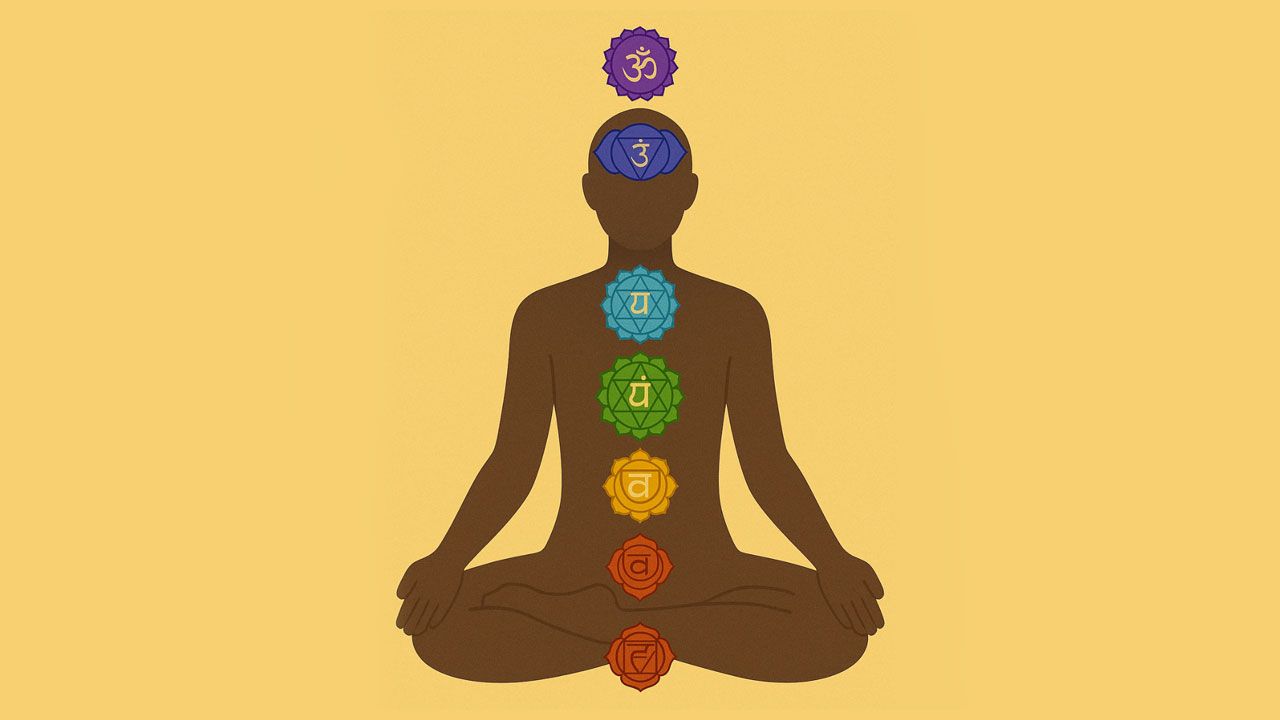How to Avoid Being a Masculine Woman
Jun 13, 2025
Women weren’t designed to push, chase, or prove their worth. Yet, society has conditioned you to believe that to be strong, you must be hard. That if you’re not in control, you’ll be left behind. That softness makes you weak.
Your body wasn’t meant to live in a constant state of tension. Your energy wasn’t meant to be spent leading, forcing, and fighting to be seen, heard, or loved. A woman in her feminine power doesn’t beg for devotion, she inspires it. She doesn’t grip onto control, she trusts herself enough to let go. And when she does, something shifts. Men show up differently. Love feels different. Her presence alone becomes magnetic.
But when you’ve spent years in survival mode, surrender feels impossible. It’s a process of unlearning, unraveling, and remembering.
What Causes a Woman to Become Masculine?
Lack of Feminine Role Models
If she watched her mother control everything, making decisions, never resting, brushing off emotions as “unimportant,” she learned that being feminine isn’t an option, only survival is. For example, she might perceive femininity as a hindrance to being taken seriously and thus adopt more traditionally masculine behaviors to fit societal expectations.
If softness was mocked, if beauty was dismissed, if tenderness was seen as a weakness, she learned that to be taken seriously, she must abandon all of it.
Childhood Trauma & the Need for Protection
For many women, masculinity is a survival mechanism, not a choice. It’s not that she naturally leans into dominance or control but that life forced her to. A woman who lacked protection and security in childhood learns that depending on others is dangerous.
If her father was absent or emotionally unavailable, she steps into the role of protector and not because she wants to, but because she had no other option. If she experienced abandonment, neglect, or betrayal, she builds emotional armor to ensure she never needs anyone too deeply.
If she faced criticism or constant instability, she becomes hyper-independent, believing that control is the only way to avoid pain. These responses are deeply masculine in nature. This hyper-independence can also affect her interactions with a romantic partner, making it difficult to rely on or trust them fully.
Masculinity is about doing, protecting, providing, leading. She had to embody these qualities in order to feel safe. But over time, this defense mode becomes her default mode.
Societal Expectations & the Workplace

The modern world doesn’t reward feminine energy. As more women enter roles traditionally held by men, they often find that this shift impacts their feminine energy. Modern society celebrates women who are strong, independent, and dominant, qualities that help them rise in careers but often leave them feeling hardened, disconnected, and exhausted everywhere else.
So women adapt. They push. They hustle. They armor up. And in the process, they trade in their natural radiance for something harder, colder, and deeply exhausting. Most women learn early that to be taken seriously, they must compete, perform, and prove. The boardroom doesn’t reward softness. The workplace has no patience for emotions.
A woman in leadership is expected to command attention, make decisions, and compete aggressively. She learns to detach from emotions to be respected. She suppresses warmth, receptivity, and intuition because they’re seen as liabilities.
A woman climbs the corporate ladder by standing her ground, competing aggressively, making hard calls, and projecting confidence at all times. The more she operates in this mode, the harder it becomes to soften in her relationships.
The Feminist Movement’s Influence on Gender Dynamics

Women’s rights changed everything. It gave us freedom, choices, and opportunities, a path to independence that women before us could only dream of. But with that liberation came an unintended consequence: it pulled us into the very role our male counterparts once held, whether we wanted it or not.
Feminism taught women to be strong, to be capable, to stand as equals but somewhere along the way, it also devalued the very essence of femininity itself. Women weren’t just given the right to work, to lead, to provide, they were told they had to in order to be taken seriously.
So women adapted. Many of us suppressed desires for romance, rejected the longing to be pursued, convinced ourselves that we didn’t need softness or protection. We made careers our identities, wore independence like armor, and became the very providers and protectors we once sought in men. Masculine men also need to balance their energies to maintain healthy relationships.
Relationship Trauma & Wounds from Men
No woman steps into masculine energy or hardens without reason. She does it because experience taught her that softness doesn’t feel safe. If being feminine once meant being vulnerable to pain, she learns to protect herself the only way she knows how: by taking control.
When a woman is hurt, whether by infidelity, emotional neglect, or abandonment, her response isn’t just emotional. It’s a shift in survival strategy. She stops waiting, stops trusting, stops expecting. She leads because no one else did.
A woman who loved a man who was emotionally unavailable learns to suppress her needs. She stops believing in devotion, settles for surface-level connections, and convinces herself she doesn’t need much.
A woman who gave everything to a man who took her for granted decides she’ll never “give too much” again. She keeps relationships at a distance, avoids emotional depth, and mistakes detachment for strength.
Taking the Lead in Relationships
Some women don’t step into masculine energy because they want to. They do it because they’ve been with men who gave them no other choice.
A weak, passive, or emotionally dependent man leaves a woman carrying the weight of the relationship. If she doesn’t take charge, nothing happens. If she doesn’t make decisions, they go nowhere. If she doesn’t step up, things fall apart.
At first, it feels like responsibility. Then it starts to feel like resentment. She doesn’t feel supported, she feels like she’s parenting a grown man. Instead of feeling cherished, she feels constantly depended on. Rather than feeling feminine, she has to run the show.
And attraction dies. She doesn’t want to run the relationship, but every time she tries to lean back, nothing happens. So she steps up again, not because she wants to, but because she feels like she has to.
And this is where it happens, the slow erosion of attraction. She starts feeling more like the “man” in the relationship, carrying the weight while her partner follows. Resentment builds. Intimacy fades. The relationship loses polarity.
Cultivating Feminine Expression in Daily Life
Wear Softer Clothing
Clothing influences how a woman feels in her body and it’s not restricted to style. Flowy fabrics, delicate jewelry, and silk against the skin activate sensory awareness, allowing a woman to soften her into her feminine essence of embodiment over performance.
A structured blazer and stiff posture keep her in performance mode, ready to handle, fix, and manage. These are examples of masculine traits in clothing, emphasizing dominance and assertiveness. A silk dress that moves with her body allows her to feel instead of force.
To awaken her inner goddess, a woman should dress in a way that honors her sensuality, grace, and divine presence to feel and look like a goddess.
Move Differently
A woman stuck in masculine energy moves with tension. Shoulders tight, jaw clenched, hips stiff. She walks with purpose, not presence. These behaviors are indicative of masculine energy.
Feminine energy moves with flow, not force. It’s in the sway of the hips, the softness of the hands, the way the shoulders relax instead of tense.
- Relax the jaw because tension in the face signals tension in the body.
- Let the hips move naturally instead of holding them tight.
- Slow down. Feminine energy isn’t rushed. It moves with ease.
A woman doesn’t need to think about being feminine, she needs to allow her body to express it.
Speak with Warmth
Masculine energy in speech is direct, sharp, and efficient; it gets to the point, but often at the cost of connection. Feminine energy, on the other hand, creates space, invites warmth, and allows emotion to flow through words. For example, using phrases like “I feel” or “It seems to me” can make the conversation more inviting and open.
This doesn’t mean a woman should make her voice smaller or weaker. It means she should speak with depth, inflection, and an inviting presence.
Here’s how to embody warmth in your voice and speak from a feminine space:
- Use softer phrasing that connects instead of commands. Instead of saying, “I don’t like that,” say, “That doesn’t feel right to me.” This maintains honesty but adds receptivity.
- Slow down your speech. Rushing through words feels masculine and urgent. Let your words flow naturally, with pauses that allow for presence and connection.
- Infuse your voice with emotion. Let excitement, curiosity, and playfulness come through. A monotone, flat voice sounds closed off, while warmth and inflection make conversations feel inviting.
- Soften your tone without losing confidence. Speaking in a warm, melodic tone makes a woman’s words more engaging. A slight upward lilt at the end of a sentence or subtle vocal inflections make speech more dynamic and open.
- Create space instead of pushing the conversation forward. Instead of forcing answers or control, allow silence to exist, letting emotions and connection guide the flow.
Words carry energy. Masculine speech commands, directs, and asserts. Feminine speech draws in, invites, and creates intimacy.
By slowing down, softening the tone, and allowing expression to flow naturally, a woman communicates not just with words, but with presence.
Tantric Practices to Cultivate Feminine Energy
1. The Yoni Breath: Awakening Sensual Presence
Most masculine women hold stress in their pelvis, jaw, and shoulders, these are the very areas that need to be open for feminine energy to flow. The Yoni Breath practice can help release these masculine traits, allowing for a balance between masculine and feminine energies. If the breath is shallow, the body stays in a state of control and rigidity. Deep, intentional breathing into the womb space shifts the nervous system out of fight-or-flight and into softness and surrender.
How to Practice the Yoni Breath:
- Find a comfortable position. Sit with your spine straight or lie down. Place one hand on your heart and one on your womb (lower belly).
- Breathe deeply into your womb. Let the inhale expand your belly fully, filling the space with breath and warmth.
- Exhale with intention. As you breathe out, imagine the tension melting from your pelvis, hips, and lower belly. Feel the release.
- Add movement. Begin to gently rock or circle your hips as you breathe, allowing the energy to flow.
- Use sound to activate release. Feminine energy is connected to expression. Let out deep sighs, moans, or humming sounds to activate the throat chakra, which is directly linked to the yoni.
- Continue for 5–10 minutes, focusing on softness, fluidity, and surrender.
2. Feminine Flow Movement
A woman in masculine energy moves with tension. Her posture is firm, her steps are purposeful, her body is controlled. Years of being in “doing” mode have made her stiff, disconnected from the fluidity that defines feminine energy. Feminine flow movement can help shift from masculine to feminine behaviors, allowing a woman to reconnect with her natural fluidity.
Feminine flow movement undoes this rigidity. It isn’t about choreography or looking a certain way. It’s about softening, loosening, and letting the body express without restriction.
This practice retrains a woman to inhabit her body instead of just using it to get through the day.
How to Practice Feminine Flow Movement
- Set the space. Play soft, feminine music. Stand in front of a mirror or find a space where you can move freely.
- Start with slow hip sways. Move side to side, allowing the tension in your hips to release.
- Introduce circular movements. Roll your shoulders, soften your spine, trace circles with your hips. Feminine energy moves in waves, not sharp lines.
- Engage the hands. Let them flow, trace the shape of your body, touch your skin with presence. Hands often reflect a woman’s level of control and if they’re stiff, the rest of the body follows.
- Soften the eyes. Feminine energy is about presence. Look at yourself without judgment, without fixing, without criticism. Let your gaze be warm and open.
- Breathe through any emotions. If resistance, discomfort, or emotions come up, don’t stop. Breathe, let it move through you, and keep flowing.
Final Thoughts
You weren’t meant to grip life by the throat, force love to stay, or carry the weight of every decision. But somewhere along the way, you were taught that being feminine meant being powerless. That if you softened, you’d be walked over. That if you let go, everything would fall apart.
Breaking out of survival mode isn’t easy. Your mind will tell you that if you don’t do it, no one will. That softening is dangerous. That if you don’t hold it all together, everything will crumble.
Let it.
Let everything that requires you to be hard fall apart. Let what isn’t meant for you leave. Let yourself step back, lean into your body, and trust that what is meant for you, whether it’s love, success, or deep soul-level safety, will rise to meet you.
Because the truth is, you were never meant to push. You were meant to flow.
If you are interested in nurturing your feminine essence in a world where you are pushed into a masculine expression, explore our online courses, specifically, The Goddess Unveiled and Women’s Erotic and Emotional Fulfillment courses. These are created to get you reconnected to your femininity.















